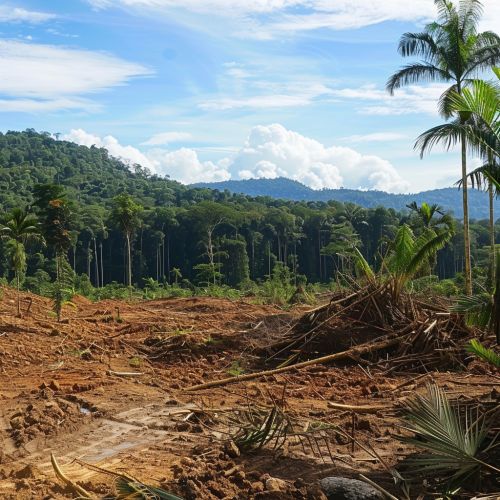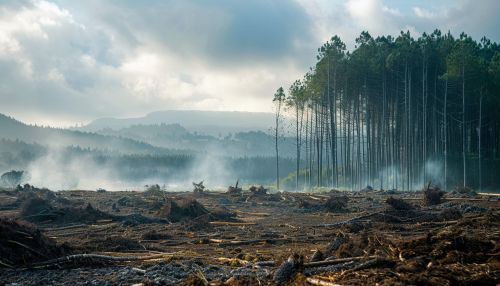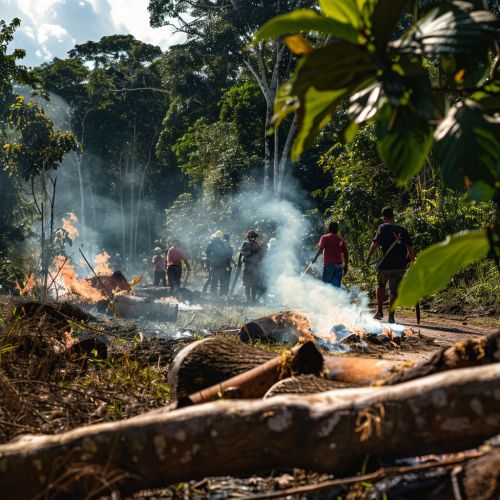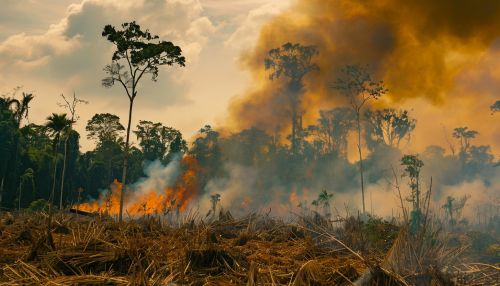Conservation conflict
Introduction
Conservation conflict refers to disagreements and disputes that arise due to differing views on land and resource use, primarily between conservation and development interests. These conflicts often involve various stakeholders, including government agencies, non-governmental organizations (NGOs), indigenous communities, and private sector entities, each with their own perspectives and interests stakeholders.
Causes of Conservation Conflict
Conservation conflicts can arise due to a variety of reasons. These include differing values and perceptions, competing interests, power imbalances, and lack of communication or understanding among stakeholders.


Differing Values and Perceptions
Different stakeholders often have different values and perceptions regarding the environment and its resources. For instance, conservationists typically value biodiversity and ecosystem health, while developers may prioritize economic growth and job creation. These differing values can lead to conflicts when decisions need to be made about land and resource use.
Competing Interests
Conservation conflicts often arise when different stakeholders have competing interests in the same land or resources. For instance, a mining company may want to extract minerals from a forest, while conservationists want to protect the forest for its biodiversity. In such cases, conflicts can arise over how the land or resources should be used.
Power Imbalances
Power imbalances among stakeholders can also lead to conservation conflicts. Often, more powerful stakeholders, such as government agencies or large corporations, have more influence over land and resource use decisions. This can lead to conflicts with less powerful stakeholders, such as indigenous communities or local conservation groups, who may feel that their interests are not being taken into account.
Lack of Communication or Understanding
Lack of communication or understanding among stakeholders can also lead to conservation conflicts. Without effective communication, stakeholders may not understand each other's perspectives or interests, leading to misunderstandings and conflicts.
Impacts of Conservation Conflict
Conservation conflicts can have various impacts, both positive and negative. On the negative side, they can lead to environmental degradation, social unrest, and economic losses. On the positive side, they can lead to increased awareness and understanding of conservation issues, and can spur stakeholders to find innovative solutions to conservation challenges.


Environmental Impacts
Conservation conflicts can lead to environmental degradation if they result in unsustainable land or resource use. For instance, if a conflict between a mining company and conservationists is resolved in favor of the mining company, the resulting mining activities could lead to deforestation, habitat loss, and pollution.
Social Impacts
Conservation conflicts can also have social impacts. They can lead to social unrest and conflict among communities, particularly if some stakeholders feel that their interests are not being taken into account. In some cases, conservation conflicts can even lead to violence.
Economic Impacts
Conservation conflicts can have economic impacts as well. They can lead to economic losses if they result in delays or cancellations of development projects. On the other hand, if a conflict is resolved in a way that leads to sustainable land or resource use, it can result in long-term economic benefits.
Positive Impacts
Despite the potential negative impacts, conservation conflicts can also have positive impacts. They can lead to increased awareness and understanding of conservation issues among stakeholders and the wider public. Moreover, they can spur stakeholders to find innovative solutions to conservation challenges, leading to improved conservation outcomes.
Managing Conservation Conflict
Effective management of conservation conflicts is crucial for achieving conservation goals. This involves understanding the causes and impacts of the conflict, engaging all relevant stakeholders, and finding mutually acceptable solutions.


Understanding the Conflict
The first step in managing a conservation conflict is to understand its causes and impacts. This involves identifying the stakeholders involved in the conflict, understanding their perspectives and interests, and assessing the environmental, social, and economic impacts of the conflict.
Stakeholder Engagement
Engaging all relevant stakeholders is crucial for effective conflict management. This involves ensuring that all stakeholders have a voice in the decision-making process, and that their perspectives and interests are taken into account.
Finding Mutually Acceptable Solutions
The ultimate goal of conflict management is to find solutions that are acceptable to all stakeholders. This can involve negotiation, mediation, or other forms of conflict resolution. The aim is to find a balance between conservation and development that meets the needs and interests of all stakeholders.
Conclusion
Conservation conflict is a complex issue that involves a range of stakeholders with differing values, perceptions, and interests. While these conflicts can have negative impacts, they can also lead to increased awareness and understanding of conservation issues, and can spur stakeholders to find innovative solutions. Effective management of conservation conflicts, involving understanding the conflict, engaging stakeholders, and finding mutually acceptable solutions, is crucial for achieving conservation goals.
See Also
- Conflict Resolution in Conservation - Stakeholder Engagement in Conservation - Conservation and Development
